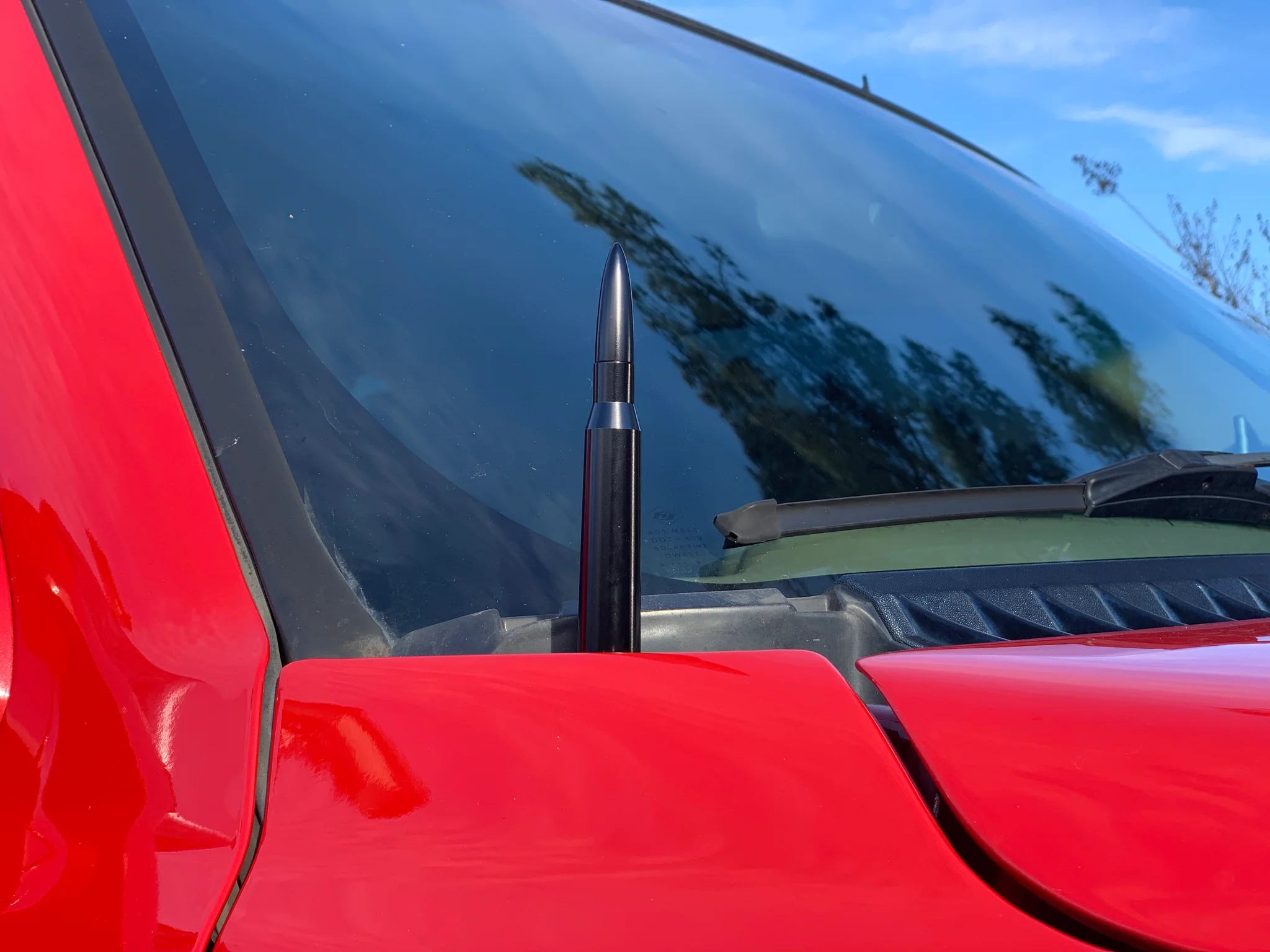How to install bullet antenna
Bullet antennas add a personality touch to your vehicle and promise enhanced durability compared to traditional antennas. Beyond aesthetics, bullet antenna is crafted to withstand the elements, making them a practical upgrade for any adventure seeker or style-conscious driver. But, before we jump into the nuts and bolts of installation, selecting the right antenna for your vehicle is important, considering factors like compatibility, size, and design to match your vehicle’s aesthetics and functionality needs.
How to install bullet antenna on Silverado/GMC Sierra/50 Cal/Jeep Wrangler
- Gather Your Tools: You’ll need an adjustable wrench or a socket set for most installations.
- Remove the Existing Antenna: Start by unscrewing your factory antenna. Using a cloth to grip the antenna base can prevent damage to your vehicle’s paintwork.
- Prepare the Installation Site: With the old antenna removed, clean the exposed area to ensure a dirt and residue-free surface. This step is crucial for a secure fit and to prevent any corrosion down the line.
- Select the Correct Adapter: Many bullet antennas have multiple adapters for vehicle makes and models. Compare these adapters with your vehicle’s antenna base and choose the one that fits snugly.
- Install the Bullet Antenna: Thread your new bullet antenna onto it once the adapter is in place. If your antenna includes an O-ring or a similar sealing component, ensure it’s properly seated to avoid any moisture ingress. Tighten the antenna to the desired position by hand, aligning any logos or designs as preferred.
- Final Checks: Give the antenna a gentle tug to ensure it’s securely attached. Remember, it doesn’t need to be overly tight, just secure enough to stay in place through car washes and high speeds.
- Enjoy Your New Look: With the installation complete, step back and admire your handiwork. Not only have you added a custom touch to your vehicle, but you’ve also embarked on a simple DIY project that enhances its style and functionality.
Troubleshooting Common Issues
Even with straightforward installations, you might need help with a few hiccups. If your bullet antenna doesn’t fit as expected, double-check that you’ve selected the correct adapter. For reception issues, consider the material and length of your new antenna; metal antennas generally provide better reception than other materials, and length can affect signal quality.
Why Bullet Antennas Are Becoming a Must-Have Car Accessory
Bullet antennas are more than just a piece of metal on your car; they’re a statement. Here’s why they’re soaring in popularity:
- Aesthetic Appeal: With unique design, bullet antennas offer an instant upgrade to your vehicle’s appearance, adding a touch of ruggedness or sleekness, depending on your chosen style.
- Durability: Unlike traditional antennas, bullet antennas are built to last. They’re often made from high-quality materials like aluminum, making them resilient against the elements and car washes.
- Easy DIY Upgrade: Installing a bullet antenna is a simple, satisfying project that doesn’t require a mechanic. It’s an accessible way for car owners to personalize their vehicles.
- Improved Reception: Many users find that a quality bullet antenna doesn’t just look good, it can also enhance radio reception, depending on the model and material.
- Versatility: Whether you’re driving a truck, SUV, or sedan, there’s a bullet antenna that fits. This versatility makes them a favorite among a wide range of vehicle owners.
Enhancing Your Vehicle with Style and Function
Upgrading to a bullet antenna is a simple yet effective way to customize your vehicle, reflecting your style and personality. Beyond aesthetics, it’s an opportunity to involve yourself in the automotive DIY culture, learn more about your vehicle, and take pride in personalizing it. Installing a bullet antenna is a rewarding project that combines style with substance, making it a popular choice for drivers across the USA.
